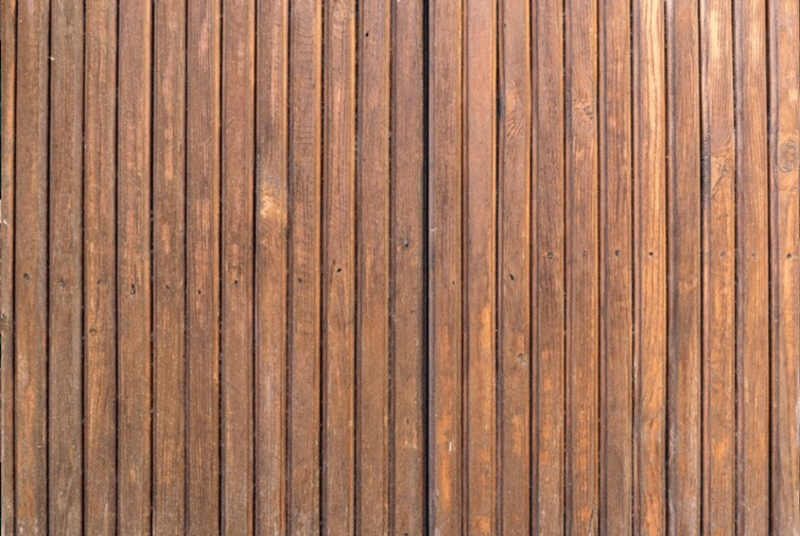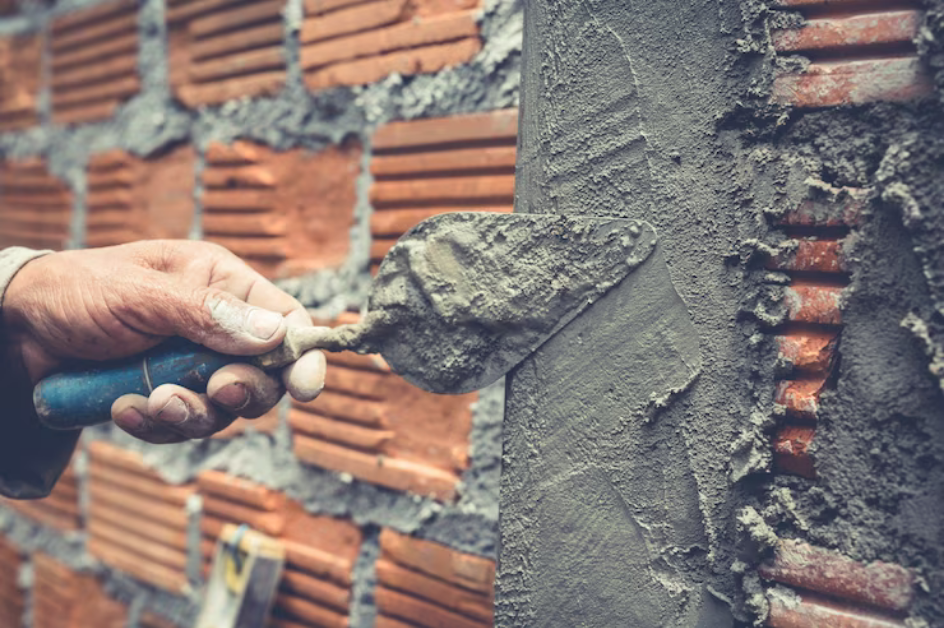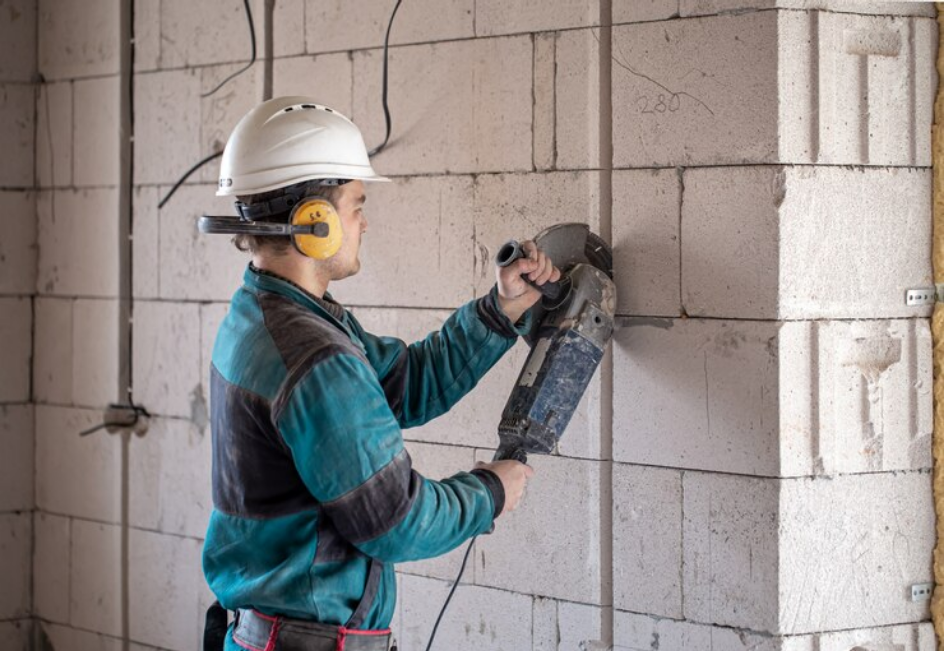- Free Estimates

Your front yard is the first impression visitors have of your home. A well-designed and carefully chosen front yard fence enhances your property’s curb appeal and provides security and privacy. Trumbull, CT, known for its picturesque landscapes and charming neighborhoods, is a place where homeowners take pride in their properties. To help you make the best choice for your front yard fence, here’s a list of the top options recommended by the best fence contractor in Trumbull, CT.
Before bricklaying, grasping the diverse types of bricks at your disposal is crucial. The selection of the right brick is a decision that masonry companies emphasize, as it can profoundly influence the final outcome of your project. Among the common choices are:
Choosing the appropriate brick variety is paramount for your project’s success, as emphasized by masonry companies in Ridgefield, CT. Factors to take into account include:
Budget: What is your budget for the project?
Before initiating your bricklaying project, assembling a comprehensive set of essential tools and equipment is imperative, a practice emphasized by masonry companies in Ridgefield, CT. These tools and equipment are vital for ensuring the efficiency and precision of the bricklaying process, enabling you to achieve a successful project outcome. Key items include:
Working with bricks and mortar can be physically demanding and potentially hazardous. Prioritize safety by:
Mortar is a binding material used in construction to hold bricks or stones together, providing structural stability. It typically consists of a mixture of cement, lime, sand, and water and is crucial in ensuring the durability and integrity of buildings and other masonry structures.
In bricklaying, the role of mortar is paramount, as it binds the bricks together and ensures structural stability. Masonry companies recognize the importance of mortar and are well-versed in utilizing various types, each tailored to specific applications.
Cement mortar is an excellent choice for load-bearing structures due to its strength and durability. It provides the necessary structural integrity required for modern construction projects.
Lime mortar, a time-honored building material, is particularly well-suited for older buildings as it allows for flexibility and breathability in the construction. This flexibility helps accommodate the natural movement of historic structures, preventing cracking and damage.
Masonry cement mortar is known for its improved workability, making it an ideal choice for intricate masonry work. Its smooth consistency enhances the ease of laying bricks or stones, ensuring a precise and visually appealing finish.
Mortar mix is a convenient solution for both professional builders and DIY enthusiasts, offering pre-mixed mortar that saves time and effort in the construction process. This user-friendly option ensures consistent mortar quality, easily promoting successful project outcomes.
Before you start laying bricks, thoroughly assess your worksite. Consider factors such as:
The foundation and footings serve as the base for your brick structure. Properly preparing this crucial groundwork ensures stability and longevity:

Planning is the cornerstone of successful bricklaying. Begin by creating a blueprint or layout plan that includes:
Calculating the number of bricks needed for a project involves determining the wall’s length, height, and the chosen bond pattern. Measure these dimensions accurately and consider consulting masonry companies if you need clarification on the calculations, as accuracy is crucial to avoid running out of bricks mid-project or having excess materials. Hiring masonry companies can ensure the job is done correctly and efficiently.
To ensure that your brick wall is level and plumb, establish clear reference points:
String lines and levels are indispensable for maintaining straight courses and achieving uniform brickwork. Learn how to set them up effectively:
The choice of bond pattern greatly influences the appearance and stability of your brickwork. Some popular bond patterns include:
Selecting the appropriate bond pattern depends on the wall’s purpose, load-bearing requirements, and personal preference. Consider which pattern aligns best with your project goals.
Ensuring your brick wall is square is crucial for achieving a professional finish. The diagonal measurement technique is a reliable method to confirm squareness:
In some cases, adjustments may be necessary to achieve squareness. You can make corrections by shifting the string lines or adjusting the position of the bricks. Remember that accuracy in the early stages of bricklaying is essential for a successful end result.

Mixing mortar can be a physically demanding task. To ease the process, consider using the appropriate mixer, such as:
Achieving the correct mortar consistency starts with proper ingredient preparation:
The consistency and texture of your mortar are crucial for strong and durable bonds between bricks. Aim for mortar that is:
Mortar mixing can be unforgiving, and common mistakes can compromise the integrity of your brickwork. Be mindful of pitfalls such as:
Curing is the process of maintaining the moisture level of the mortar after bricklaying. Proper curing enhances the strength and durability of your brickwork by preventing premature drying and cracking.
Implement these curing techniques for optimal results:
Duration: Continue curing for at least 3-7 days, depending on weather conditions.
Before you start laying wet bricks, preparing a solid foundation for the first course is crucial. Follow these steps:
Positioning the first brick accurately sets the tone for the entire project:
Once the first course is in place, you can start building the wall:
Consistency is key to achieving professional-looking brickwork:
When your project entails arches, doorways, or windows, it demands specialized consideration, particularly by masonry companies in Ridgefield, CT.
Achieving clean, well-finished corners and edges requires skill:

For added strength and stability, consider incorporating reinforcement materials into your brickwork:
If your brick wall is part of a larger structure, ensure a secure connection:
Pointing refers to the process of finishing the mortar joints between bricks. It serves both functional and aesthetic purposes:
Various pointing techniques can be employed based on the desired aesthetic:
Struck Pointing: A raised ridge is formed along the mortar joint for visual appeal.
While DIY bricklaying can be a rewarding endeavor, it’s important to acknowledge its limitations:
Certain projects, especially those involving large-scale constructions or intricate designs, can easily surpass the capabilities of a DIY enthusiast. Masonry companies have the experience and resources to tackle these complex undertakings, ensuring that the final result meets your expectations and adheres to industry standards. Their ability to handle intricate details and massive projects is a testament to their expertise.
Achieving and maintaining structural integrity in masonry work necessitates professional knowledge and expertise. Masonry companies possess an in-depth understanding of the structural principles that govern bricklaying. They meticulously plan and execute projects, considering factors like load distribution and foundation stability, to guarantee that the finished structure is robust, durable, and safe.
Bricklaying is a meticulous, time-consuming craft; professional masonry companies are known for their efficiency. They have the experience and skills to complete projects more swiftly and with fewer setbacks, minimizing disruptions to your daily life. By entrusting your project to these experts, you save time and ensure that the work is done with precision and care, resulting in a high-quality finished product that stands the test of time.
Certain projects demand the expertise of masonry companies:
Constructing load-bearing walls and structures is a complex task that demands meticulous engineering and precise calculations to ensure safety and stability. Masonry companies possess the expertise to undertake these projects precisely, ensuring that your building’s structural integrity is maintained. Their in-depth knowledge of masonry materials and techniques guarantees that load-bearing components are constructed to withstand their demands.
When crafting intricate and unique masonry designs, such as arches or complex patterns, the skills of masonry companies in Ridgefield, CT, shine brightly. These professionals have honed their craft to tackle challenging and artistic projects, turning architectural visions into tangible reality. Their mastery of advanced techniques and attention to detail enables them to bring even the most elaborate designs to life, adding a touch of elegance and sophistication to your space.
Prioritizing safety in construction is paramount, and masonry companies excel in this regard. They understand building codes and industry standards, ensuring every project complies with safety regulations. By entrusting your masonry work to masonry companies in Ridgefield, CT, you can have confidence that your structure looks stunning and provides a secure and dependable environment for occupants, meeting all safety requirements.
Calling in masonry companies offers several advantages:
Engaging the services of masonry companies comes with a wealth of benefits, starting with their extensive experience in the field. Masonry companies such as Ridgefield Expert Masonry Contractor have dedicated years to honing their craft, accumulating a profound knowledge of various bricklaying techniques. This depth of expertise empowers them to handle even the most complex masonry projects with precision and finesse, providing you with the assurance that your project is in capable hands.
When it comes to completing masonry projects promptly and without errors, masonry companies excel. Their efficient workflow, backed by years of experience, allows them to work swiftly and accurately. This translates to faster project completion times, reducing disruptions to your daily life and ensuring your project progresses smoothly from start to finish.
Masonry companies prioritize the structural integrity of your brickwork. They understand and adhere to safety and building code standards, ensuring that your project looks great and is built to last. Their attention to detail extends to every aspect of the construction process, from the choice of materials to the quality of the mortar, guaranteeing a structurally sound end result.
Professionals from masonry companies are artists in their own right. Their mastery of bricklaying techniques enables them to achieve flawless finishes and bring intricate designs to life. Whether you desire a classic, timeless appearance or a unique, custom design, masonry experts have the skills and creativity to transform your vision into a stunning reality.
One of the most valuable aspects of hiring masonry companies is the peace of mind they offer. The stress and uncertainty often associated with DIY masonry projects are eliminated when you enlist the services of seasoned masonry companies. You can trust that your project will be handled professionally, from the initial planning stages to the final touches, allowing you to relax and enjoy the process as your vision for your property takes shape.
Bricklaying blends artistry with precision, and while DIY projects can be rewarding, it’s essential to acknowledge the complexities involved. Masonry companies like Ridgefield Expert Masonry Contractor offer invaluable expertise, tools, and experience to ensure your brickwork’s enduring beauty and structural integrity. Contact Ridgefield Expert Masonry Contractor today to confidently bring your vision to life.
Copyright © 2023 Ridgefield Fence Contractor Experts